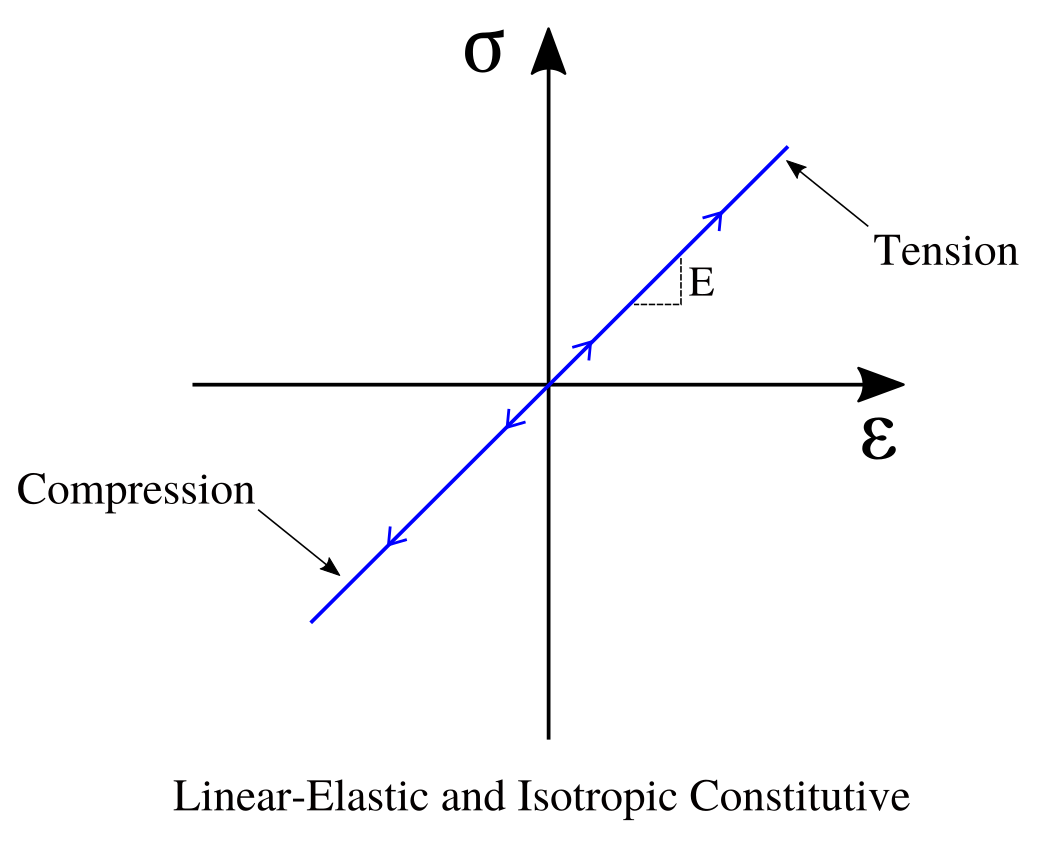The Elastic1DFiber class creates a uniaxial material with the constitutive equation given as
\[ \sigma = E \, \epsilon \]
where \(\sigma\) is the uniaxial stress, \(\epsilon\) is the uniaxial strain, and \(E\) is the elasticity modulus. The Figure shows the constitutive law of this material. No hysteresis behavior is present for this formulation.

REFERENCE:
The python Pre-Analysis in the 01-Pre_Process/Method/Attach.py file provides with an interface to populate the Entities dictionary. This file contains several functions to populate specific fields. For example, to create a Elastic1DFiber material using json format, use:
addMaterial(tag, name='Elastic1DFiber', attributes):
Example
A ELASTIC1DFIBER can be defined using the python interface as follows:
SVL.addMaterial(tag=1, name='Elastic1DFiber', attributes={'E': 200.0, 'nu': 0.25, 'rho': 0.0})
Application
Please refer to the A15-DY_1D_Material_Fiber_Elastic.py file located at 03-Validations/01-Debugging/ to see an example on how to define a PlasticPlaneStrainBA material.
On the contrary, the 01-Pre_Process/Method/Remove.py file provides with an interface to depopulate the Entities dictionary. For example, to remove an already define Material, use:
The C++ Run-Analysis in the 02-Run_Process/02-Materials/03-Fiber/Elastic1DFiber.cpp file provides the class implementation. A Elastic1DFiber is created using the built-in json parse-structure provided in the Driver.hpp. A Elastic1DFiber is defined inside the "Fibers" json field indicating its "Tag" as follows,
{
"Materials": {
"Tag": {
"name" : "ELASTIC1DFIBER",
"attributes": {
"E": double,
"nu": double,
"rho": double
}
}
}
}
| Variable | Description |
|---|---|
Tag | Unique material object identifier. |
E | Represents the elasticity modulus. |
nu | Represents the Poisson's ratio. |
rho | Represents the material density. |
A uniaxial ELASTIC1DFIBER with elasticity modulus 200, Poisson's ratio 0.25, and no density is defined:
{ "Materials": { "1": { "name" : "ELASTIC1DFIBER", "attributes": { "E" : 200.0, "nu" : 0.25, "rho": 0.0 } } } }